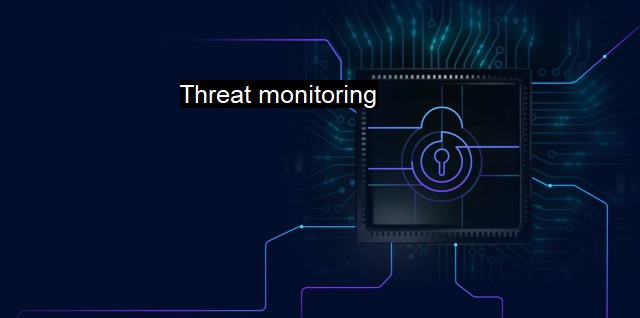What is Threat monitoring?
Threat Monitoring: The Proactive Solution to Cybersecurity Threats Affecting Organizational Systems
Threat monitoring is an essential component of any efficient, systematic approach to maintaining cybersecurity and combating the increasingly complex and evolving digital threat landscape. Its primary function is to continuously examine and evaluate an organization's digital infrastructure for potential threats, and subsequently manage and mitigate them, ensuring comprehensive protection.Threat monitoring comprises a set of protocols, sophisticated tools, and astute strategies designed specifically for identifying, tracking, and countering potential cybersecurity threats in real-time. Whether the threats are coming from viruses, botnets, advanced persistent threats, zero-day exploits, phishing schemes, or other numerous forms of cyberattacks, active threat monitoring provides the frontline defense.
The process expands beyond just identifying vulnerabilities within a network. It continually assesses system weaknesses, irregular activities, odd configurations, and suspicious network patterns. By actively tracking these factors, potential attack vectors can be identified and secured before they can be exploited.
In the context of antivirus software, threat monitoring analyzes the behavioral patterns of different files, programs, or systems, checking for anomalies indicative of a potential threat. It extends to checking downloaded files, scanning email attachments, verifying website security, and more. They use advanced heuristics, artificial intelligence (AI), and machine learning algorithms trained on enormous datasets of malicious and benign software behavior patterns.
Threat monitors are looking for unusual patterns of activity. a legitimate software program typically will not attempt to modify or delete system files. But malware will, so antivirus software monitors for these malicious behaviors. It's essentially about constructing a digital barricade around your system and maintaining a constant, watchful eye for anything that attempts to breach that safeguard.
When a potential threat is identified, most threat monitoring systems are configured to automatically respond, often by isolating or removing the detected malicious entity. This automated threat response allows organizations to rapidly respond to potential threats, potentially thwarting attacks before they can cause significant damage.
Part of a broader cybersecurity infrastructure, threat monitoring should integrate with other tools and systems to create a comprehensive defense. Including, but not limited to, incident response plans, disaster recovery, user education and training, and regular system updates.
The importance of threat monitoring magnifies in today's increasingly digital global era, with organizations heavily relying on data and digital infrastructure for daily operations. Effective threat monitoring can be the thin line between an average day at the office or high-cost downtime due to a successful cyber attack.
Threat monitoring represents a valuable, continuous layer of security in the volatile domain of cybersecurity. It encapsulates real-time tracking, speedy automatic responses, verb in-depth software behavior analysis, and system integration. Thoroughly implemented threat monitoring does not guarantee complete immunity from cyber threats. it significantly reduces risk and response time, paving the way for a more secure digital environment, equipping organizations to better protect valuable digital assets, intellectual property, and stored personal data.

Threat monitoring FAQs
What is threat monitoring?
Threat monitoring refers to the process of identifying, analyzing and responding to potential security threats to a computer system or network. It involves continuous monitoring of all aspects of the system to detect any suspicious activity and quickly respond to it to prevent potential damage to the system.Why is threat monitoring important in cybersecurity?
Threat monitoring is essential in cybersecurity because it helps to detect vulnerabilities and security risks within a system before they can be exploited. It allows security teams to take action before any harm is done, preventing malware infections, data breaches, and other cyberattacks.What are some of the tools used in threat monitoring?
There are several tools used in threat monitoring such as antivirus software, intrusion detection systems (IDS), intrusion prevention systems (IPS), firewalls, and security information and event management (SIEM) systems. These tools work together to provide a comprehensive view of the system and detect any potential threats.What is the process of threat monitoring?
The process of threat monitoring typically involves three stages: identification, analysis, and response. Identification involves monitoring the system for any unusual activity or events. Analysis involves investigating any identified threats to determine their level of severity and potential impact on the system. Response involves taking appropriate action to mitigate the threat, such as blocking the attack, removing malware or patching vulnerabilities. This process should be continuous to ensure that the system is always protected against potential threats.| | A | | | B | | | C | | | D | | | E | | | F | | | G | | | H | | | I | | | J | | | K | | | L | | | M | |
| | N | | | O | | | P | | | Q | | | R | | | S | | | T | | | U | | | V | | | W | | | X | | | Y | | | Z | |
| | 1 | | | 2 | | | 3 | | | 4 | | | 7 | | | 8 | | |||||||